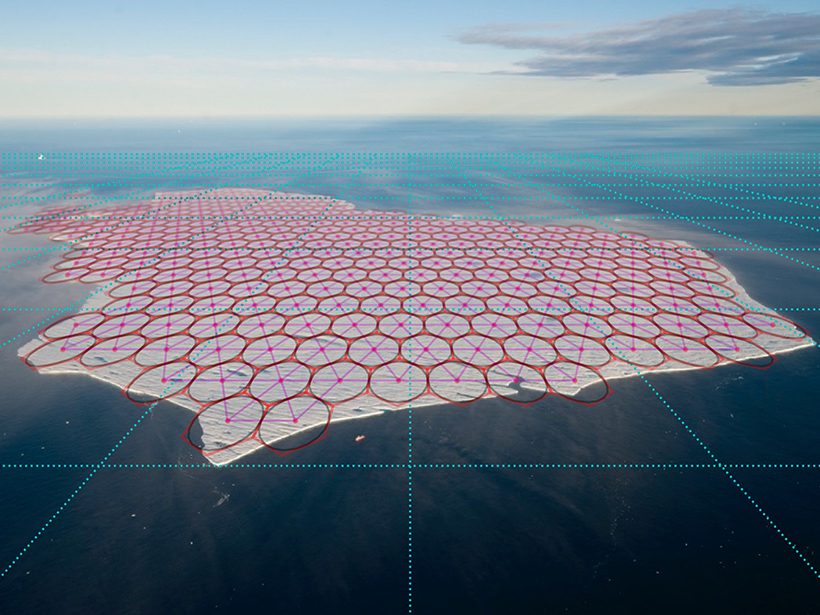Source: Journal of Advances in Modeling Earth Systems (JAMES)
Last month, an iceberg the size of Delaware calved, or broke away, from Larsen C, the fourth-largest ice shelf surrounding Antarctica. A crack that had been growing in size for decades finally gave way, setting the iceberg afloat and shrinking the shelf’s overall area by about 10%.
Icebergs rarely form in this manner; in fact, large calving events happen just once every 40–50 years. But when they do, the icebergs are typically tabular, or wide and flat topped. Tabular icebergs can be more than 110 kilometers across and 300 meters high (with about 90% of their height underwater). Because of their large size, tabular icebergs often travel great distances, and their movement can affect ocean circulation, the formation of bottom water (the dense layer of water at the very bottom of the ocean) and sea ice, and the productivity of life-forms in their path.
Icebergs vary in size, shape, and buoyancy, so attempting to model them mathematically is a significant challenge. However, in a recent study, Stern et al. demonstrate an effective technique for modeling tabular icebergs.
In their method, a large iceberg floating in the sea is represented by many small “particles,” which store all the information about the iceberg and exert pressure on their surroundings. The particles are connected by theoretical bonds, which interact with one another and hold the theoretical iceberg together. When these bonds break, therefore, the model shows what would happen during a calving event that forms a tabular iceberg. The model also illustrates the behavior of an existing tabular iceberg breaking apart into smaller pieces.
Iceberg calving, although infrequent, has a major global impact. It is responsible for about half of all ice shelf decay in the Antarctic (the other half is from melting) as well as the formation of more than 90% of all iceberg mass in the Southern Hemisphere. This study provides a helpful way to mathematically model large calving events off of ice shelves and individual tabular icebergs. (Journal of Advances in Modeling Earth Systems (JAMES), https://doi.org/10.1002/2017MS001002, 2017)
—Sarah Witman, Freelance Writer
Correction, 18 August 2017: The article has been updated to reflect the correct thickness that an iceberg can reach.
Citation:
Witman, S. (2017), How to find an iceberg’s breaking point, Eos, 98, https://doi.org/10.1029/2017EO079621. Published on 16 August 2017.
Text © 2017. The authors. CC BY-NC-ND 3.0
Except where otherwise noted, images are subject to copyright. Any reuse without express permission from the copyright owner is prohibited.

